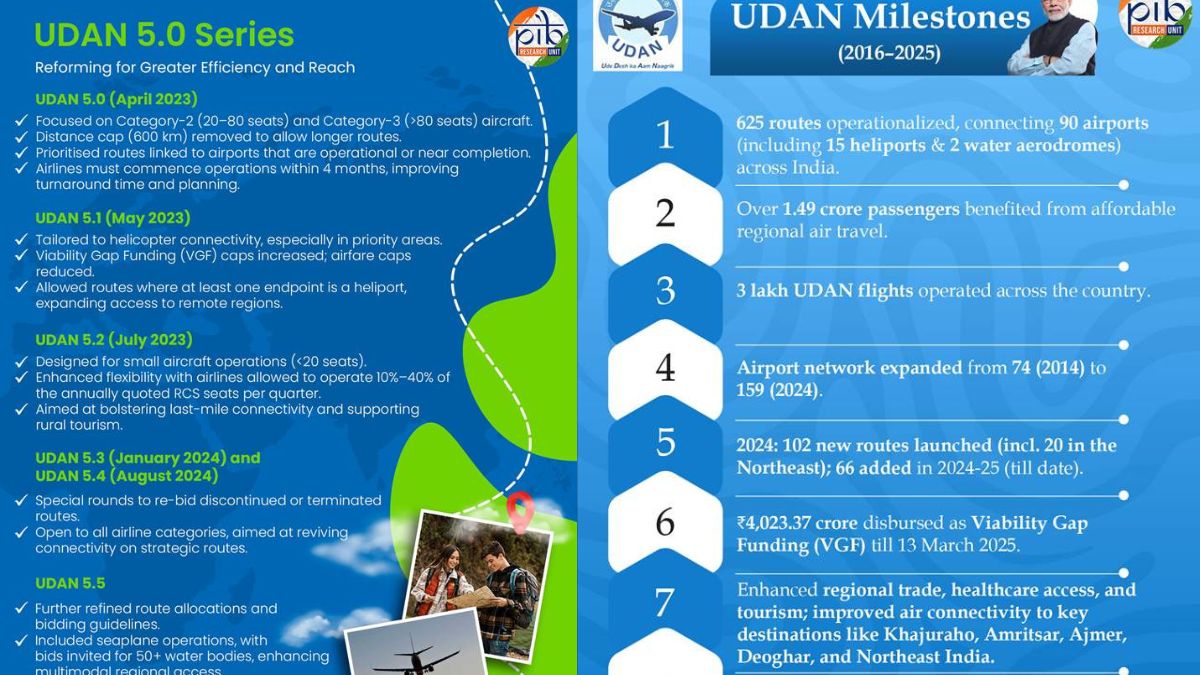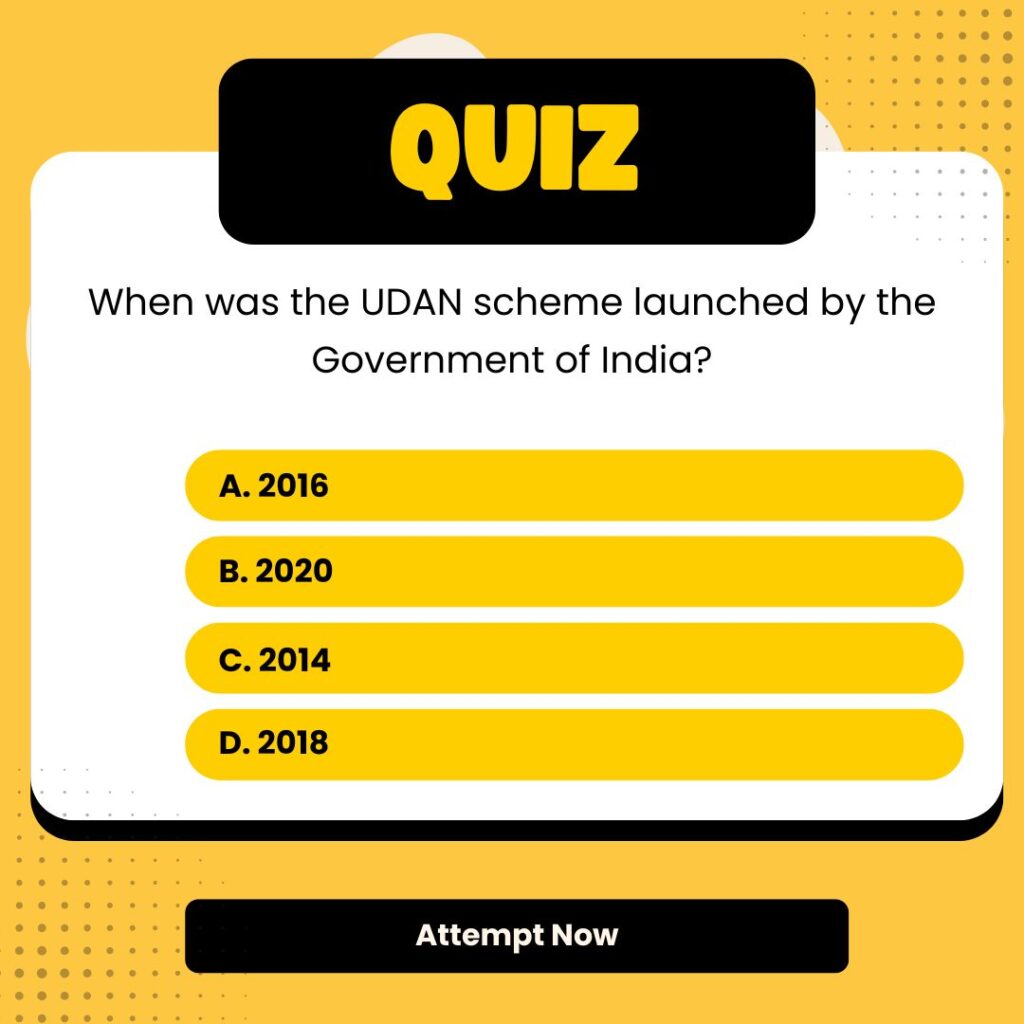India’s aviation sector has traditionally been dominated by large cities, with air travel often being a luxury only accessible to the elite. However, with the launch of the UDAN scheme in 2016, this narrative has changed. UDAN, an abbreviation of “Ude Desh Ka Aam Nagrik,” aims to democratize aviation and make air travel affordable for the common man. This initiative aims to connect Tier-2 and Tier-3 cities and underserved regions of India with major cities, boosting regional connectivity and economic development.
Why in the News?
- On April 27, 2025, the scheme celebrates eight years of success, with notable progress in expanding India’s aviation network and bringing affordable travel to the masses. The UDAN (Ude Desh Ka Aam Nagrik) scheme, launched by the Government of India on October 21, 2016, has completed significant milestones in making air travel affordable and accessible for all.
Key Components and Stakeholder Incentives
The UDAN scheme’s success is attributed to a combination of financial support, strategic partnerships, and a clear vision to foster regional connectivity. Below are the key components and incentives that have driven the scheme’s evolution:
1. Viability Gap Funding (VGF)
- The government provides financial support to airlines under the Viability Gap Funding (VGF) mechanism, which ensures that airlines can operate flights on less profitable routes without raising ticket prices beyond the affordable limit.
2. Airfare Cap
- To ensure that air travel remains accessible, UDAN has imposed an airfare cap on regional routes, making it financially feasible for the average citizen.
3. Collaborative Governance
- The success of UDAN hinges on the collaborative efforts between the central government, state governments, Airports Authority of India (AAI), and private airport operators. This multi-tier collaboration allows for streamlined operations and increased participation from private players.
4. Stakeholder Incentives
- Airport Operators: Airports under the UDAN scheme waive landing and parking charges, and AAI does not levy Terminal Navigation Landing Charges (TNLC) on RCS flights.
- Central Government: Capped excise duty on Aviation Turbine Fuel (ATF) at RCS airports and encourages code-sharing agreements between airlines.
- State Governments: Support includes reducing VAT on ATF and providing essential services at reduced rates.
Evolution of UDAN: A Journey of Expansion
The UDAN scheme has expanded significantly since its inception, with each phase contributing to the growth of India’s regional air connectivity.
UDAN 1.0 (2017)
- Launch Milestone: The first UDAN flight between Shimla and Delhi took off on April 27, 2017.
- Coverage: 5 airlines operated 128 routes connecting 70 airports, including 36 new airports.
UDAN 2.0 (2018)
- Expansion: The second phase connected 73 underserved and unserved airports and incorporated helipads into the UDAN network.
UDAN 3.0 (2019)
- Tourism Focus: Introduced tourism routes and seaplane operations, including North-Eastern regions.
UDAN 4.0 (2020)
- Targeted Regions: Focused on hilly areas, the North East, and island territories with increased helicopter and seaplane services.
Key Innovations and the Future of UDAN
1. UDAN Yatri Cafes
- Inclusive Travel: Cafes at Kolkata and Chennai airports offer affordable food, with tea at ₹10 and samosas at ₹20, promoting inclusive air travel.
2. Seaplane Operations
- Last-Mile Connectivity: The UDAN scheme introduced guidelines for seaplane operations, focusing on safety, security, and viability, enhancing regional connectivity.
3. Revamped UDAN (2025)
Expansion: The revamped UDAN will add 120 new destinations, targeting remote areas and Tier-2 and Tier-3 cities, ensuring access for an additional 4 crore passengers.
4. Krishi UDAN Scheme
- Agricultural Logistics: This initiative supports farmers by providing cost-effective air logistics for agri-produce, especially from North-Eastern and hilly regions.
5. Infrastructure Development
- The government plans to build 50 new airports in the next five years to cater to increasing demand and further boost regional growth.





 Gyan Bharatam Initiative: India’s Nation...
Gyan Bharatam Initiative: India’s Nation...
 National Forensic Infrastructure Enhance...
National Forensic Infrastructure Enhance...
 PAHAL (DBTL) Scheme Delivers Improved Ef...
PAHAL (DBTL) Scheme Delivers Improved Ef...







